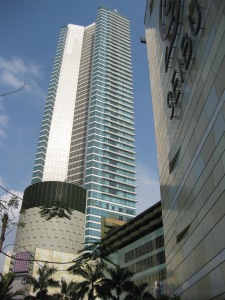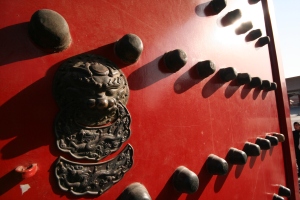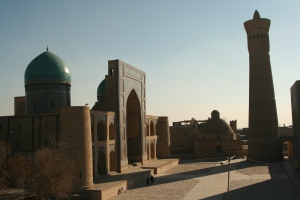Pitcher Partners Property Breakfast Speech – South East Asia: South Australia’s Largest Export Market
March 21, 2013 Leave a comment
The Asian Century is often discussed in terms of China and India, as is fair due to the large population size and market capacity. However, far too often our government and business leaders have failed to realise that there are in many cases strong, established and emerging business opportunities in South East Asia, in markets where we have traded successfully for more than a century. With the Asian Century upon us, it is time we returned South East Asia as a market of focus and started to realise the real and tangible opportunities that are rapidly emerging.
Former US Secretary of Defence – Donald Rumsfeld famously said about the search for weapon of mass destruction:
“There are known knowns. These are things we know that we know. There are known unknowns. That is to say, there are things that we know we don’t know. But there are also unknown unknowns. There are things we don’t know we don’t know.”
I will go so far as to suggest that many of you here this morning are in the latter category of knowledge about Asia, and indeed South East Asia – that is; there are things about South East Asia which you don’t know that you don’t know.
This is not surprising, for our local market has for many years been the primary focus of many businesses in Australia. However, with a modestly growing and tight economy in the non-mining sector, there are now plenty of reasons to broaden our knowledge of our closest Asian Neighbours – South East Asia.
South East Asia has a population of 600 million people, less than half the population of China or India, but more than 25 times larger than Australia. It comprises a dozen or so countries, and is united by ASEAN – The Association of South East Asian Nations. If ASEAN were a country it would be South Australia’s largest export market, with export trade for 2011/12 of $2.3Billion, surpassing export trade to China of $2.2Billion, and well in front of export trade to India of $759 million. This is an important distinction when our governments focus almost exclusively on China and India.
South East Asia is where four of Australia’s seven Free Trade Agreements have been ratified, including; Singapore, South Australia’s 4th largest trading partner; Malaysia, SA’s 3rd largest export destination; and Thailand, SA’s 10th largest export destination. In addition to these bilateral FTA’s, Australia has ratified an FTA with ASEAN, and is currently in formal negotiations with Indonesia to achieve a Comprehensive Economic Partnership Agreement. Should this agreement be achieved as hoped over the next 12 months, it will be Australia’s most outstanding agreement, effectively opening the floodgates to trade and investment between Indonesia and Australia. Indonesia, with a population of over 250 million, provides perhaps the most outstanding growth market for South Australia. It has been a member of the WTO since 1995, and has sustained positive GDP growth trending at greater than 5% over the past 10 years, with 6.3% GDP growth forecast for 2013. This growth figure compares favourably with forecasts for both China (8%) and India (6.2%), and is being sustained by strong domestic demand.
Indonesia is the forgotten market for Australia and South Australia. Export trade from South Australia is coming off a low base but has grown from $132 million export sales in 2009/10 to $603 million export sales in 2011/12. It is now SA’s 6th largest export market. That’s almost a five-fold increase in export sales. Indonesia is the powerhouse market of South East Asia, and with political and economic stability it is rapidly emerging as one of the most import economies in the world. Standard Chartered Bank has predicted the Indonesian economy will surpass the Australian economy in terms of size to become one of the top 10 global economies by 2020, and top 6 by 2030.
There is a rapidly emerging middle and upper class developing across South East Asia, from Indonesia to Vietnam. Jakarta is indicative of this emerging new wealth in South East Asia, characterised by an eclectic mix of street vendors and luxury malls, Maserati’s and Scooters, Mercedes Benz taxis, and motorised rickshaws. An diverse mix of rich and poor, with a rapidly emerging middle class. It’s home to ALL of the big luxury brands. There are 3 Luis Vuitton Stores in Jakarta alone, and they sit side by side with Prada, Mont Blanc, and Cartier. These high-end retail stores are filled with buyers, local Indonesian buyers, paying global prices for genuine luxury clothing and accessories. Indonesian shopping malls are filled with local Indonesian consumers paying global prices for genuine luxury goods. To walk through the shopping malls of Jakarta is to be fully aware of the emergence of the middle class consumer in Indonesia, if not South East Asia.
The Jakarta skyline is replete with high-rise office and residential apartments. The rapid and sustained economic growth in Indonesia has seen the population of Jakarta swell to upwards of 25 million people during the week, and the city sprawl out and absorb the surrounding manufacturing cities of Bogor and Cikarang.
This growth has pushed up the price of quality office and residential accommodation in Jakarta. Colliers International has forecast office vacancy rates in Jakarta of less than 2% for 2013. While Jones Lang Lassalle have forecast residential rental occupancy rates at between 85-90%. This demand for high quality accommodation in Jakarta has seen residential rental agreements requiring between 2-5 years rent upfront to secure an apartment.
This picture of Jakarta, is replicated across South East Asia, in Singapore, where admittedly there is a lack of the ramshackle housing; Kuala Lumpur where the Petronas Towers take centre stage, through to Bangkok, Hanoi and Manila. The middle class is arriving fast across the region and has started to demand products and services, the very products and services that South Australia can supply. I paint this emerging picture of Indonesia and South East Asia to demonstrate that our closest Asian neighbours have developed the capacity to pay, and more and more people are joining the middle class.
The key drivers in the South East Asian economies are based broadly around four core factors:
1. Food Security,
2. Mining, Oil and Gas,
3. Capacity Building and
4. Tourism and Infrastructure
Food Security – There is increasing demand for food, agricultural products, and beverages. This demand has resulted in SA food companies finding new markets in South East Asia. Indonesia for example was South Australia’s largest wheat export market in 2011/12, surpassing even China.
Mining, Oil and Gas – South East Asia is a centre for mining, oil and gas exploration and drilling, benefiting from the same mining boom we have witnessed in Australia. The core minerals being exploited in Indonesia, East Timor, Malaysia and Myanmar include Thermal Coal, Oil, LNG, Coal Seem Gas, Copper, Gold and Silver. The growth in the mining sector in markets such as Indonesia, East Timor, Myanmar and Malaysia, have provided opportunities for Australian engineering, design, and construction companies to help develop the infrastructure needs of these markets. East Timor has for example upwards of $4 Billion in infrastructure projects in the pipeline related to the growth in the oil and gas industry.
Capacity Building – Constraints in terms of skills have seen all governments across the region talk about the need to up-skill their workforce. There is a need for higher educated workforce throughout the region, in both vocational and higher education. Middle class families are looking to education providers in Australia to provide this skilled advantage to their children. As a result, more students from South East Asia, including Indonesia, will be seeking to come to Australia to undertake vocational and higher education studies in the coming years. These students often come from wealthy middle class families and seek accommodation close to the universities in Australia.
Tourism Infrastructure – Tourism is one of the traditional economic opportunities for the region, with resorts from Bali in Indonesia, through to Phuket in Thailand. However, the climactic conditions of the region mean that tourist infrastructure requires constant redevelopment, including hotels, villas, roads, marinas and airports. There are also new tourism sites being developed across South East Asia, from East Timor to Vietnam. South Australian property developers and urban planners are already looking at how they can enter this market.
The key message I would like to impress upon South Australian business is not to ignore the huge market opportunities in South East Asia. Our business leaders should be embracing the many emerging opportunities. Indonesia and South East Asia, provide the greatest opportunity for South Australian businesses to take advantage of the rapidly growing demand for Australian commodities, products, and services. South Australian business should be establishing strategies to leverage these very opportunities.


















